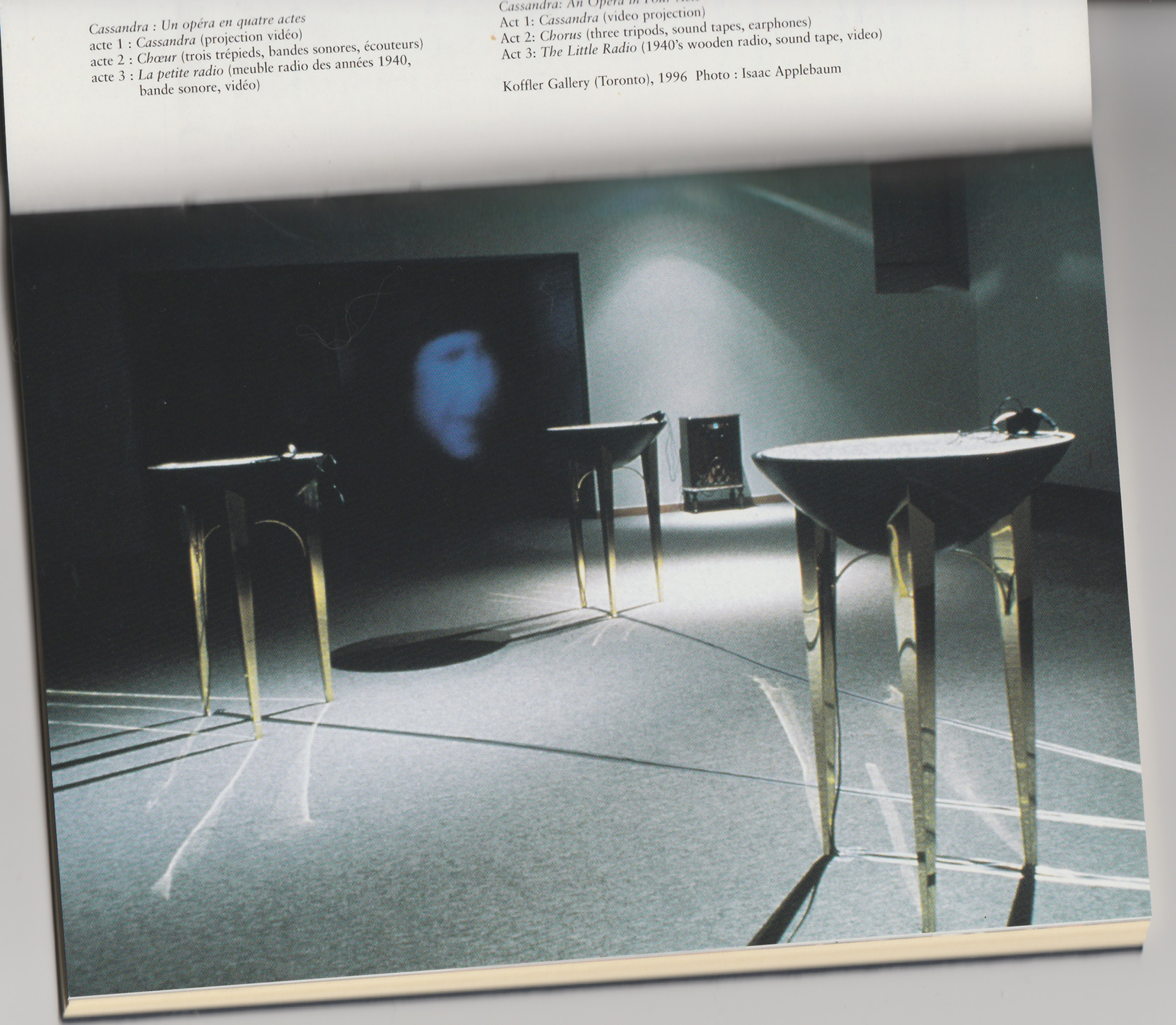Artist Statement: Cassandra
What was it, Ernst, that your shadow unwittingly said
Did the small child see something horrid in the wood shed
Long ago?
– W. H. Auden
Just as Proust begins his life story with the moment of awakening, so every presentation in history must begin with awakening; in fact it should deal with nothing else.
– Walter Benjamin
In 1994 I began a project, a continuum of installations, about being human in the 20th century, the period in which I will have spent the majority of my life. As well as examining the ways in which contingencies such as gender, class, place, and the unfolding of history determined my own formation, my idea was to do works that looked backward to the past, in the spirit of Walter Benjamin’s allegory of ‘The Angel of History’. The Angel faces the past, trying to understand it, to awaken the dead, to change history which he sees only as a piling up of one catastrophe after another. At the same time, a ferocious wind, which we call ‘progress’, is forcing him backward into the future. Benjamin insisted on the necessity of an ‘awakening’ from history as the only way that the world could evade endless cycles of violence and despair. His admonitions seem, tragically, to have never been more timely.
The twentieth century phenomenon of the enthrallment of masses of people by a leader such as Hitler, in particular haunts me. Both CASSANDRA: AN OPERA IN FOUR ACTS, the first of the 20th century works, (slides 2-4), and TO ARCHIVE THE SHAPE OF MEMORY, the second, (slides 5-10), examine my own internalizations of experiences such as hearing the terrifying voice of Hitler on the large upright radio in our home in Montreal as well as my father’s reaction to it.
TO ARCHIVE THE SHAPE OF MEMORY, is an inquiry into the ways in which we construct both personal and historical memory, how these two are woven together inseparably in our psyches; how they cross paths and affect each other. The work overlays my own history, that of a Jewish child growing up in a patriarchal family structure, onto the concurrent events of world history which so coloured my childhood. At another layer of meaning, I wished to study the process by which technologies of representation and the passage of time mediate and (re)construct the narratives of our lives and of history itself. In this work and in the third, MONOTONY IS NOURISHED BY THE NEW, (slides 8-10), I have used a device called Anamorphosis, an early European experiment in the metaphysics of optics. Drawings or paintings were executed in a mathematically determined distortion. The images could then be magically restored to their true perspective within the infinite depth of a cylindrical mirror, or if the viewer positioned her/himself at a fixed point of ‘truth’
Act 3 of CASSANDRA: AN OPERA IN FOUR ACTS (slide 4),consisted of a video projected from the empty dial aperture of a 1940’s upright radio, a sound and visual site of the remembrance of Hitler’s voice raging in my home. By inserting the past into the present, I wished to reinvent a memory that lives in the now and is a lesson for the future. The works for which I am asking an exhibition continue to explore issues of technologies of representation, cycles of violence and war in the 20th century. (Please see Project Description).
